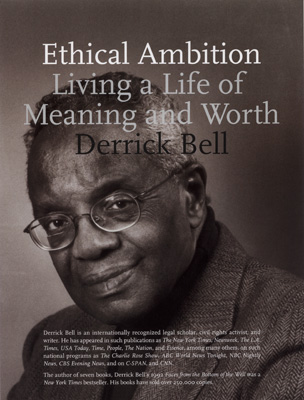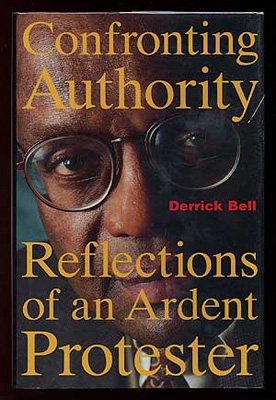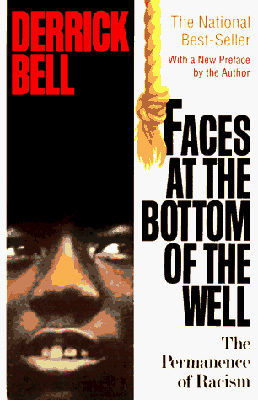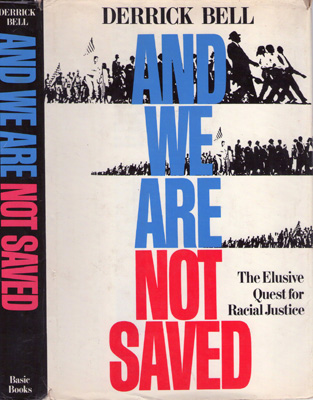The Scholarship of Derrick Bell & Critical Race Theory
Professor Derrick Bell is often credited for helping lay the foundation for Critical Race Theory. When he joined the faculty of Harvard Law School in 1969, Professor Bell brought his experience in and reflections on the civil rights movement and racial inequality to the center of his teaching and scholarship.
“Serving Two Masters” and Interest Convergence
In 1976, the Yale Law Review published a controversial law review article by Professor Bell titled, “Serving Two Masters: Integration Ideals and Client Interests in School Desegregation Litigation” that challenged prevailing views about school desegregation and criticized civil rights litigators. Reflecting back on years of litigating efforts to implement the mandate of Brown v. Board, Professor Bell concluded that remedies championed by civil rights litigations, such as desegregation busing, were failing to improve the lives of black children and were contrary to the wishes of many black communities, which were more interested in obtaining quality schools than integrated ones. Professor Bell believed that lawyers, with their focus on changing the law, were out of touch with their clients’ wishes. He viewed this disconnect as a conflict of interest for public interest litigators and questioned whether the civil rights movement’s goals, even if accomplished, could eradicate racism and inequality.
A few years later, Professor Bell followed up on the themes articulated in this article in “Brown v. Board of Education and the Interest Convergence Dilemma,” which was published in the Harvard Law Review. This time, he revisited the Brown ruling, highlighting the broader social context in which the Supreme Court had rendered that decision. Once again Professor Bell challenged the dominant narrative that Brown was a watershed moment in U.S. history, marking a collective moral, political, and cultural shift in attitudes towards race and inequality. Instead, Professor Bell contended that the decision was the result of a convergence of interests. White elites were willing to concede on the segregation battle (at least as a matter of law) because they were concerned about international condemnation of the U.S. on this issue. Because their self-interests coincided with those of civil rights leaders, school desegregation was accomplished.
Race, Racism and American Law
These themes about the failure of antidiscrimination victories to root out social inequality, about the chimerical nature of the wins in and of themselves, and about the permanence of racism were central to another of Professor Bell’s early and most well-known publications – his casebook, Race, Racism and American Law. This text was the first of its kind in legal academia, focusing on the intersection of race, inequality and the law. As Professor Bell noted in the introduction, the purpose of the text was to examine the “law’s role in concretizing racial differences, maintaining racial inequality, and reifying the status quo,” an exercise that was necessary to understanding modern race relations and racial inequality. Professor Bell posited that race is “an indeterminate social construct that is continually reinvented and manipulated to maintain domination and enhance white privilege.” Relatedly, any success in battling racism was only temporary; progress in race relations and inequalities were periodic and narrow in scope. Racism, as Professor Bell viewed it, was a permanent and even necessary feature of U.S. social ordering.
In addition to its sobering message, Race, Racism and American Law was innovative in its use of stories to prompt discussion and analysis of race and the law. This use of fiction became a hallmark of Professor Bell’s writing over time and served a particular purpose given the sensitive nature of any discussions about race. As Professor Bell explained in later years, “I prefer using stories as a means of communicating views to those who hold very different views on the emotionally charged subject of race. People enjoy stories and will often suspend their beliefs, listen to the story, and then compare their views, not with mine, but with those expressed in the story.” With respect to Race, Racism and American Law’s use of fiction as a teaching tool in the law school class, Professor Bell did not see it as a drastic change in legal teaching methodology:
“I do not consider my stories a major departure in legal education. The use of hypotheticals is a staple of discussion in law school classrooms. In addition, final examinations are generally presented in a series of fictional facts out of which law students are expected to recognize and apply legal precedents to support their conclusions. Building on this foundation, I began extending these fictional stories to reflect the contradictions and dilemmas faced by those attempting to apply legal rules to the many forms of racial discrimination. “
As critical race theory developed, other scholars in the field adopted and elaborated on Professor Bell’s approach such that the “frequent use of the first person, storytelling, narrative, allegory, interdisciplinary treatment of law, and the unapologetic use of creativity” became characteristic of the discipline.
Professor Bell’s books “And We Are Not Saved” and “Faces at the Bottom of the Well” continued with this style and message, even though they were not strictly academic texts but were designed to reach out to a much broader audience.
The Legacy of Critical Race Theory
Because of his views about the permanence of racism and the intransigence of inequality generally, Professor Bell and critical race theorists have mistakenly been considered to be pessimists. While Professor Bell’s scholarship gave rise to a discipline that rejected liberal orthodoxy’s premise that some form of enlightenment was obtainable through reason or rational discourse, in his work and his words – particularly in his invocation of Spirituals – lies an acknowledgment of possibility. Professor Bell saw social injustice as forever changing, requiring constant reevaluation and reassessment. Attaining perfection was neither the objective nor the yardstick by which progress or success was to be measured. Against this backdrop, Professor Bell explained, “most critical race theorists are committed to a program of scholarly resistance, and most hope scholarly resistance will lay the groundwork for wide-scale resistance.” Throughout his legal career, Professor Bell worked to connect law, scholarship, and the struggle for social justice, an endeavor that critical race theorists also adopted and continue to further today.
Books by Derrick Bell
• Silent Covenants: Brown v. Board of Education and the Unfulfilled Hopes for Racial Reform (2005)
• Ethical Ambition: Living a Life of Meaning and Worth (2002)
• Afrolantica Legacies (1998)
• Gospel Choirs: Psalms of Survival in an Alien Land Called Home (1997)
• Confronting Authority: Reflections of an Ardent Protester (1996)
• Faces at the Bottom of the Well: The Permanence of Racism (1992)
• And We Are Not Saved: The Elusive Quest for Racial Justice (1987)
• Shade of Brown: New Perspectives on School Desegregation (1980)
• Race, Racism and American Law (6th Edition)
 |
 |
|
 |
 |
|
 |
 |
|
 |
